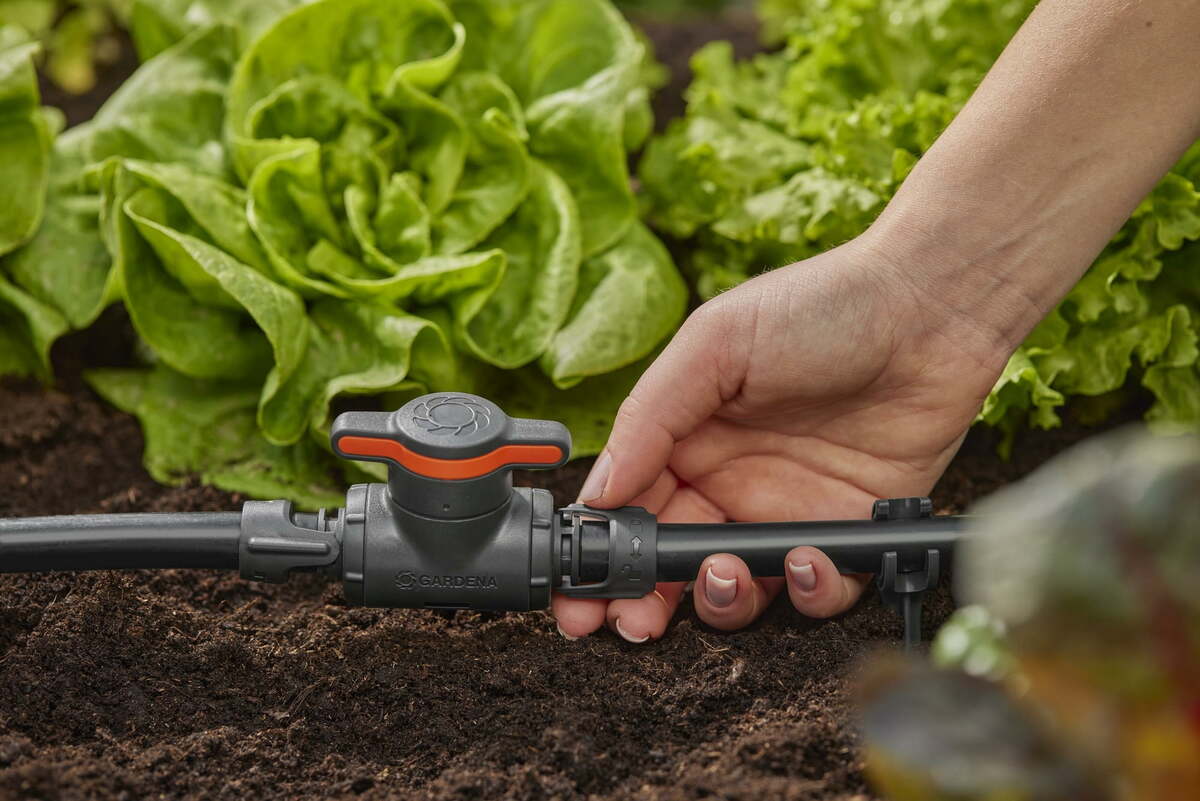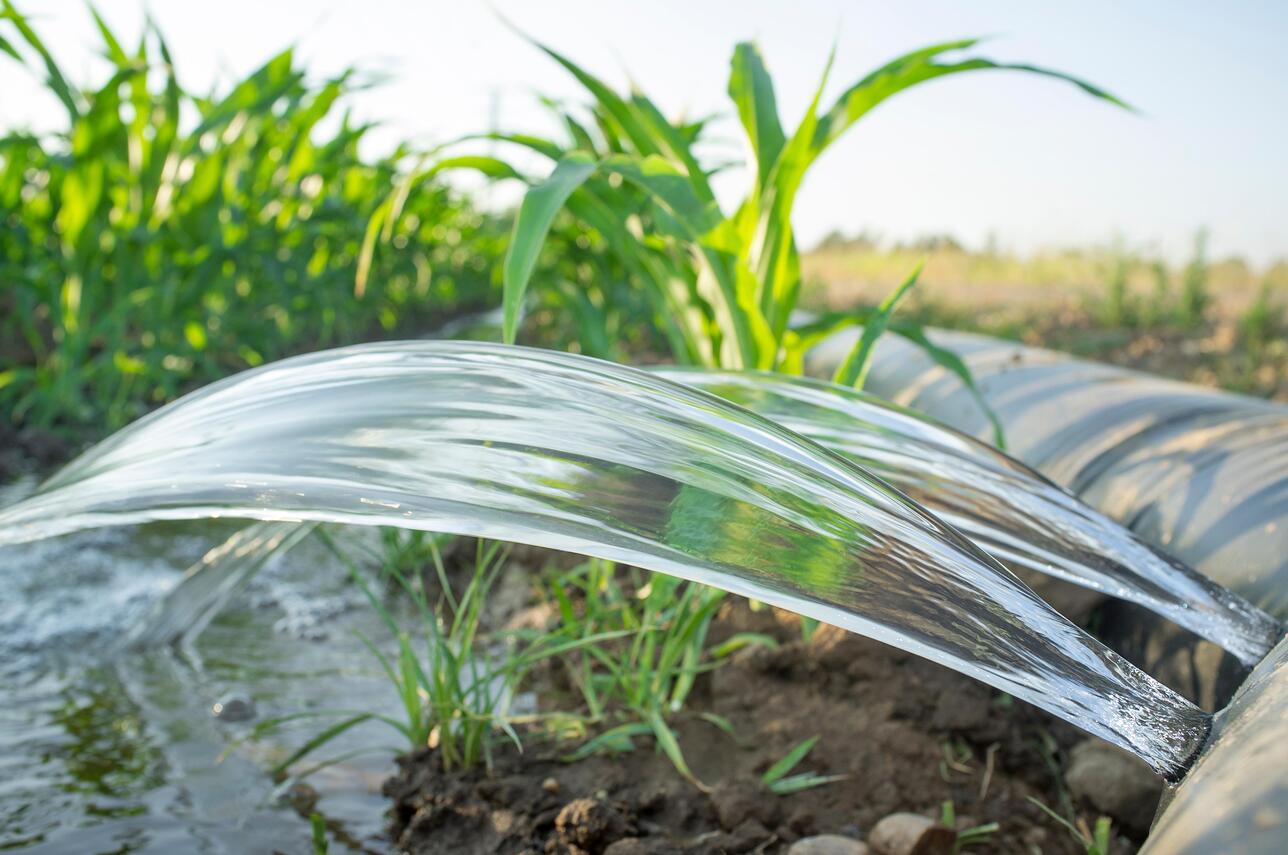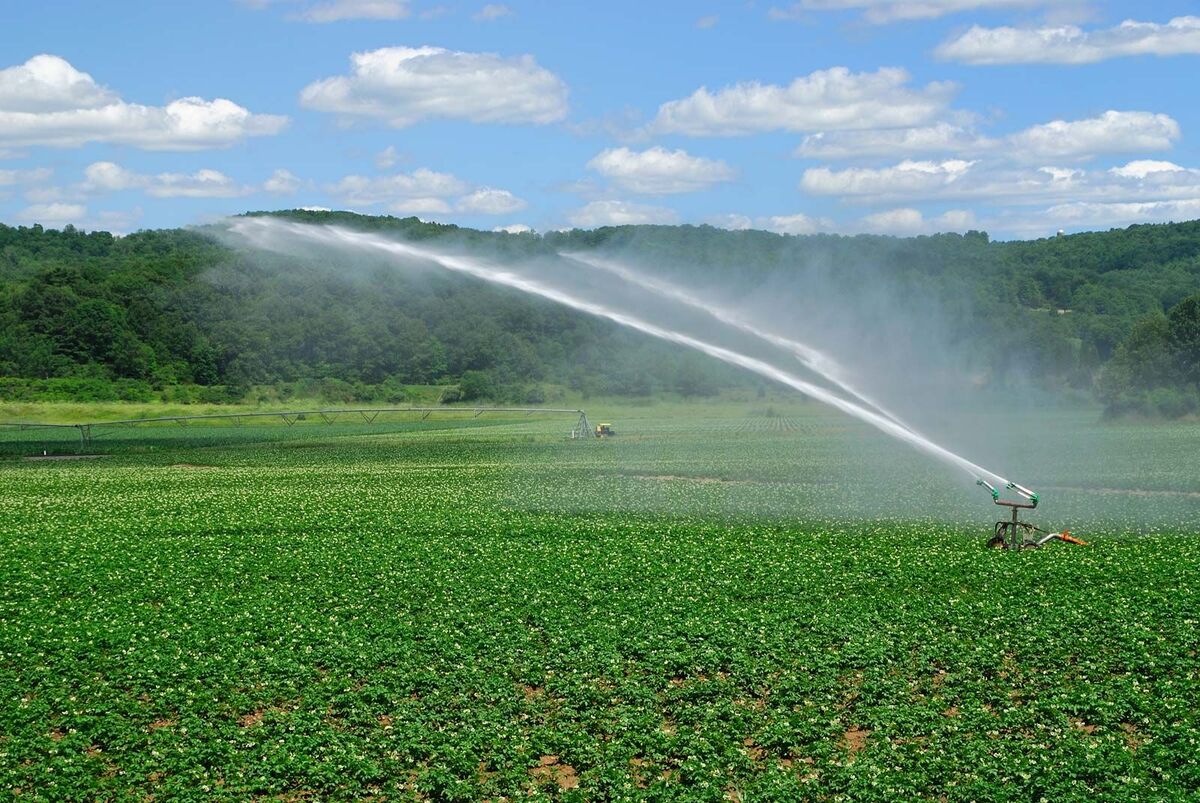Home>Gardening Basics>Tools and Equipment>Where Is Flood Irrigation Used


Tools and Equipment
Where Is Flood Irrigation Used
Modified: February 10, 2024
Discover the importance of tools and equipment in flood irrigation and where it is commonly used. Find out how these essential items optimize the irrigation process.
(Many of the links in this article redirect to a specific reviewed product. Your purchase of these products through affiliate links helps to generate commission for Chicagolandgardening.com, at no extra cost. Learn more)
Table of Contents
- Introduction
- Definition of Flood Irrigation
- History of Flood Irrigation
- Advantages of Flood Irrigation
- Disadvantages of Flood Irrigation
- Usage of Flood Irrigation in Agriculture
- Usage of Flood Irrigation in Landscaping
- Usage of Flood Irrigation in Golf Course Maintenance
- Usage of Flood Irrigation in Indigenous Farming Practices
- Conclusion
Introduction
Flood irrigation is a traditional method of water distribution used in various fields, including agriculture, landscaping, and golf course maintenance. This technique involves flooding or saturating the ground with water, allowing it to seep into the soil and provide moisture to plants and crops. Unlike other irrigation methods that involve precise targeting of water, flood irrigation covers a larger area and can be effective in areas with ample water resources.
Throughout history, flood irrigation has been widely practiced due to its simplicity and cost-effectiveness. It has played a crucial role in sustaining agriculture and contributing to food production around the world. While flood irrigation has its advantages, such as promoting deep-rooted plants and reducing the need for complex irrigation systems, it also has several drawbacks to consider.
In this article, we will explore the concept of flood irrigation, its historical significance, and its applications in different fields. We will discuss the advantages and disadvantages of flood irrigation, as well as its usage in agriculture, landscaping, golf course maintenance, and indigenous farming practices.
By gaining a deeper understanding of flood irrigation and its various applications, we can better appreciate its place in modern irrigation practices and its impact on different industries. So, let’s dive into the world of flood irrigation and explore how it has shaped our approach to water management.
Definition of Flood Irrigation
Flood irrigation is a method of watering plants or crops by flooding the field or area with water. It involves the controlled release of water onto the soil surface, allowing it to infiltrate and provide moisture to the plants’ roots. Unlike other irrigation techniques that involve the precise delivery of water to specific plants or zones, flood irrigation covers a larger area, distributing water evenly across the land.
This method is characterized by the use of open channels or ditches to transport water from a water source, such as a river or reservoir, to the field. The water is released at one end of the field and allowed to flow in a controlled manner, slowly spreading out and sinking into the soil.
There are two main types of flood irrigation: furrow irrigation and basin irrigation. Furrow irrigation involves the use of small channels or furrows created between crop rows, which direct the water flow across the field. Basin irrigation, on the other hand, involves flooding the entire field with water, creating shallow pools or basins that gradually soak into the soil.
Flood irrigation can be practiced with both surface water and groundwater sources. It is often used in areas where water resources are abundant and the cost of implementing more sophisticated irrigation systems, such as sprinklers or drip irrigation, is prohibitive.
One key aspect of flood irrigation is managing the timing and duration of water application. Over-irrigation can lead to waterlogging, soil erosion, and nutrient leaching, while under-irrigation can result in inadequate water supply to the plants, affecting their growth and productivity.
Overall, flood irrigation is a straightforward and accessible method of water distribution that has been practiced for centuries. While advancements in irrigation technology have introduced more efficient and precise methods, flood irrigation remains a viable option, especially in areas with ample water availability.
History of Flood Irrigation
The practice of flood irrigation dates back thousands of years, making it one of the oldest methods of irrigating crops. It has been an essential technique for civilizations that relied on agriculture as a means of sustenance. The origins of flood irrigation can be traced to ancient civilizations in Mesopotamia, Egypt, and the Indus Valley, where river-based agricultural systems flourished.
In Mesopotamia, the ancient Sumerians developed an intricate system of canals and dikes to divert water from the Euphrates and Tigris rivers into their fields. This allowed them to cultivate fertile land in the midst of arid surroundings. The Egyptians also practiced flood irrigation along the banks of the Nile River, harnessing its annual flooding to provide water and nutrients to their crops.
As civilizations evolved, so did the techniques of flood irrigation. In ancient China, water management techniques were highly advanced. The Chinese built intricate networks of canals and levees, enabling them to control the flow of water and distribute it evenly across their fields.
During the Middle Ages, Islamic societies in the Middle East further refined the art of flood irrigation. They constructed qanats, underground tunnels that tapped into groundwater sources and supplied water to their fields. This innovation allowed them to overcome water scarcity and cultivate arid regions. The qanat system spread to other parts of the world, including North Africa and Spain, influencing agricultural practices in those regions.
In more recent times, flood irrigation has been widely practiced in areas with abundant water resources. In the United States, flood irrigation was commonly used in the early days of agriculture, particularly in the western states where water was readily available. Large-scale irrigation projects, such as the Central Valley Project in California, utilized flood irrigation to support agricultural development.
While advances in irrigation technology have introduced more efficient methods, such as sprinkler systems and drip irrigation, flood irrigation continues to be used, especially in regions where water resources are plentiful and the cost of sophisticated irrigation systems is prohibitive.
Understanding the historical significance of flood irrigation allows us to appreciate its enduring role in agricultural development. Despite the availability of modern irrigation techniques, flood irrigation remains an important method for providing water to crops and sustaining agricultural practices.
Advantages of Flood Irrigation
Flood irrigation offers several advantages that have contributed to its widespread use in various fields. While it may not be the most efficient irrigation method in terms of water conservation, it does provide certain benefits that make it a viable option in specific circumstances. Let’s explore some of the advantages of flood irrigation:
- Cost-Effective: Flood irrigation is a relatively low-cost method compared to other irrigation techniques. It requires minimal infrastructure, with the primary investment being the construction and maintenance of open channels or ditches to distribute water across the field. This makes it accessible to small-scale farmers and those in economically constrained regions.
- Utilizes Surface Water: Flood irrigation utilizes surface water sources such as rivers, lakes, or reservoirs. This reduces dependence on underground water sources, which may be limited or difficult to access. By utilizing surface water, flood irrigation makes efficient use of readily available resources.
- Promotes Deep Root Growth: Flood irrigation allows water to seep into the soil gradually, which encourages deep root growth. Deeper roots enable plants to access water stored in lower soil layers during dry periods. This enhances the plants’ resilience to drought and promotes healthier and stronger root systems.
- Suitable for Certain Crops: Some crops, such as rice and certain grasses, have adapted well to flood irrigation and thrive in water-rich environments. Flood irrigation is particularly advantageous for these crops as it provides the ideal conditions for growth and cultivation.
- Reduces Soil Erosion: When water is distributed across the field through flood irrigation, it helps to minimize soil erosion. The slow movement and gradual infiltration of water prevent excessive runoff, which can wash away topsoil and valuable nutrients. This helps to maintain soil quality and fertility over time.
- Less Complex Infrastructure: Flood irrigation systems do not require complex equipment or specialized irrigation devices, such as sprinklers or drip systems. This simplicity reduces the risk of equipment malfunction and minimizes maintenance and repair costs.
While flood irrigation has its advantages, it is essential to consider the drawbacks and limitations of this irrigation method. Understanding the trade-offs can help farmers and landowners make informed decisions about the appropriate irrigation techniques to use based on their specific circumstances and available resources.
Disadvantages of Flood Irrigation
While flood irrigation has its benefits, it also comes with several disadvantages that need to be considered. These drawbacks can affect water efficiency, soil health, and overall productivity. Let’s explore some of the disadvantages of flood irrigation:
- Water Loss and Inefficiency: Flood irrigation can result in significant water loss due to evaporation, seepage, and runoff. The large amount of water applied to the field exceeds the actual water requirements of the plants, leading to wastage. This inefficiency can be problematic in regions with water scarcity or where conservation measures are necessary.
- Uneven Water Distribution: Flood irrigation may not provide uniform water distribution across the field. The shape of the field, slope, and soil texture can impact water flow, resulting in uneven saturation. This can lead to overwatering in some areas and underwatering in others, affecting crop growth and yield.
- Soil Erosion and Nutrient Loss: When water flows over the field surface during flood irrigation, it can cause soil erosion. This erosion can wash away valuable topsoil, along with essential nutrients and organic matter. Over time, this can degrade soil quality, leading to reduced productivity and increased soil degradation.
- Root Oxygen Deprivation: The prolonged presence of water in flood irrigation can lead to reduced oxygen availability in the soil. This can negatively impact root development and respiration, hindering the absorption of nutrients and affecting plant health and productivity.
- Inefficient Weed Control: Flood irrigation can create a favorable environment for weed growth due to the constant availability of moisture. Weeds can compete with crops for nutrients and water, reducing crop yields and making weed management more challenging and time-consuming.
- Limited Crop Compatibility: While flood irrigation is suitable for certain crops, it may not be suitable for others. Plants that are highly sensitive to waterlogging or require well-drained soils may not thrive under flood irrigation conditions. It is important to consider the water needs and tolerances of specific crops when deciding on the irrigation method.
Understanding these disadvantages of flood irrigation is crucial in making informed decisions about irrigation practices. Farmers and landowners should weigh the advantages and disadvantages and consider alternative irrigation techniques that may offer improved water efficiency and better meet the specific needs of their crops and fields.
Usage of Flood Irrigation in Agriculture
Flood irrigation has long been used in agriculture as a means of providing water to crops and ensuring their growth and productivity. While modern irrigation techniques such as sprinkler systems and drip irrigation have gained popularity, flood irrigation continues to be practiced in various agricultural settings. Let us explore the usage of flood irrigation in agriculture:
1. Field Crops: Flood irrigation is commonly used for field crops such as rice, maize, wheat, and barley. These crops often require a consistent and plentiful water supply, making flood irrigation an effective method. By flooding the fields, farmers can ensure uniform water distribution and create the ideal conditions for crop growth and development.
2. Pastures and Hay Fields: Flood irrigation is also utilized in pastures and hay fields, particularly in regions where the grasses are grown for livestock feed. A well-managed flood irrigation system helps promote healthy pasture growth, ensuring that livestock have access to nutrient-rich forage.
3. Orchards and Vineyards: While flood irrigation is generally not the primary method used in orchards and vineyards, it can be employed in certain situations. For example, young trees or newly planted vines may benefit from flood irrigation to establish strong root systems. It is crucial to manage the timing and duration of water application to prevent waterlogging and promote optimal growth.
4. Areas with Ample Water Supply: Flood irrigation is particularly prevalent in areas with abundant water resources. In regions where water is readily available, such as near rivers or canals, flood irrigation is a cost-effective and efficient method to water crops. It allows farmers to take advantage of the available water without the need for complex and expensive irrigation systems.
5. Subsistence Farming: Flood irrigation is often preferred in subsistence farming, where small-scale farmers rely on their own resources. This method requires minimal infrastructure and does not rely on expensive equipment, making it accessible to those with limited resources. Subsistence farmers benefit from flood irrigation by providing essential water to crops for their own consumption and livelihood.
6. Transition to Modern Techniques: In some cases, flood irrigation may be used as a transitional method as farmers shift from traditional practices to modern irrigation techniques. This allows farmers to gradually adopt more efficient systems while still maintaining crop productivity during the transition period.
Overall, flood irrigation remains a viable and valuable method in agriculture, especially in specific regions and for certain crops. However, it is essential to implement best practices to minimize water loss, manage water application schedules, and prevent soil erosion and nutrient loss. This will ensure that flood irrigation continues to contribute to sustainable agricultural practices.
Usage of Flood Irrigation in Landscaping
Flood irrigation is not limited to agricultural settings; it also finds application in landscaping projects. Whether it’s maintaining green spaces, parks, or large gardens, flood irrigation can be an effective method for supplying water to plants and promoting their health and vitality. Let’s explore the usage of flood irrigation in landscaping:
1. Public Parks and Recreational Areas: Flood irrigation is often used in public parks and recreational areas to water large lawns, flower beds, and shrubs. This method allows for deep watering, ensuring that the plants receive an ample supply of water to sustain their growth in open areas with expansive plantings.
2. Golf Courses: Golf courses frequently utilize flood irrigation due to their vast land area and considerable water requirements. It is commonly used to water fairways, roughs, and tee boxes, as well as the surrounding landscape. Flood irrigation helps maintain lush and green playing surfaces, contributing to the aesthetic appeal and playability of the course.
3. Estate Gardens and Landscaped Properties: Flood irrigation can be employed in large estate gardens or landscaped properties with extensive plantings. This method offers a practical and cost-effective solution for watering flower beds, ornamental trees, and shrubs throughout the property. It ensures the plants receive adequate moisture without the need for individual irrigation systems for each plant.
4. Greenhouses and Nurseries: In some situations, flood irrigation is used in greenhouses and nurseries to water potted plants or container-grown crops. This method allows for efficient watering of multiple containers simultaneously, ensuring consistent moisture distribution and providing optimal conditions for plant growth and development.
5. Large-scale Landscaping Projects: Flood irrigation is often employed in large-scale landscaping projects, such as urban green spaces, highway medians, and commercial landscapes. These areas can benefit from flood irrigation due to their size and the need to water numerous plants at once. The simplicity of flood irrigation makes it an attractive choice, especially when dealing with expansive areas.
6. Restoration and Land Reclamation: Flood irrigation is sometimes used in restoration and land reclamation projects. It can be employed to establish vegetation in areas affected by erosion or natural disasters. Flood irrigation helps initiate plant growth and aids in the reestablishment of natural habitats in these disturbed areas.
While flood irrigation can be effective in landscaping, it is crucial to implement best management practices to minimize water loss and optimize water distribution. Proper scheduling, considering the water requirements of different plants, and regular maintenance of irrigation infrastructure are essential to ensure efficient and sustainable water use in landscaping projects.
Usage of Flood Irrigation in Golf Course Maintenance
Flood irrigation is a commonly employed technique in the maintenance of golf courses, playing a vital role in ensuring healthy and visually appealing playing surfaces. With the expansive size and specific requirements of golf courses, flood irrigation offers numerous benefits in achieving optimal turf conditions. Let’s explore the usage of flood irrigation in golf course maintenance:
1. Watering Fairways and Roughs: Flood irrigation is widely used to water fairways and roughs on golf courses. These areas require thorough and even watering to maintain their lushness and playability. By utilizing flood irrigation, golf course maintenance personnel can provide uniform moisture distribution across the wide expanses of these playing surfaces.
2. Irrigating Tee Boxes and Greens Surroundings: Tee boxes and the areas surrounding greens, known as approaches or fringe areas, are commonly watered using flood irrigation. These areas require concentrated watering to ensure optimal turf growth and maintenance. Flood irrigation allows the precise delivery of water to these specific zones without affecting the greens or other areas of the golf course.
3. Creating Soil Moisture Balance: Flood irrigation helps maintain a consistent soil moisture balance throughout the golf course. This is crucial in preventing drought stress and ensuring the overall health of the turf. By carefully managing flood irrigation schedules and water application rates, golf course maintenance professionals can achieve the ideal moisture level for healthy turf growth and playability.
4. Efficient Water Conservation: While flood irrigation may not be the most water-efficient method, in golf course maintenance, it can be optimized to reduce water consumption. By employing advanced irrigation system technologies, such as computer-controlled valves, soil moisture sensors, and precise scheduling, golf course managers can effectively manage water resources and minimize waste while still maintaining high-quality playing surfaces.
5. Reduction of Dry Spots: Flood irrigation helps eliminate dry spots on the golf course, ensuring consistent turf growth and aesthetics. By providing a generous amount of water to the entire course or specific areas, flood irrigation can effectively address dry patches or areas with limited water penetration, resulting in a more appealing and playable golf course.
6. Establishment and Renovation Projects: Flood irrigation is often utilized during the establishment and renovation of golf course turf. It helps promote healthy root development and ensures the successful establishment of new grass or renovated areas. By soaking the soil via flood irrigation, new grasses can establish a strong root system and thrive in their new environment.
While flood irrigation is a valuable tool in golf course maintenance, it is essential to adopt best practices such as monitoring soil moisture levels, managing water application rates, and utilizing technology to ensure optimal water use efficiency. By integrating flood irrigation with modern irrigation techniques, golf course maintenance professionals can maintain pristine playing conditions while conserving water resources.
Usage of Flood Irrigation in Indigenous Farming Practices
Flood irrigation has been a traditional and integral part of indigenous farming practices in many cultures around the world. Indigenous farmers have long utilized flood irrigation techniques to sustain their agricultural systems and cultivate crops in harmony with nature. Let’s explore the usage of flood irrigation in indigenous farming practices:
1. Water Management in Arid Regions: Indigenous farmers in arid regions have developed sophisticated flood irrigation systems to make the most effective use of scarce water resources. These systems involve diverting water from rivers or capturing rainfall in reservoirs. By utilizing flood irrigation, they can distribute water slowly and evenly across their fields, maximizing its absorption and minimizing water loss through evaporation.
2. Promoting Soil Fertility: Indigenous farming practices often incorporate flood irrigation as a means of enriching the soil. By flooding the fields, they allow organic matter, nutrients, and minerals carried by the water to infiltrate the soil, improving its fertility. This sustainable practice helps maintain healthy and productive soils for long-term agricultural sustainability.
3. Cultivating Drought-Resistant Crops: Flood irrigation is particularly suited for indigenous farming systems that focus on cultivating drought-resistant crops. Indigenous communities have carefully selected and developed crop varieties that are adapted to their local environments. Flood irrigation allows them to provide the necessary water requirements to these crops during periods of limited rainfall, ensuring their survival and successful harvest.
4. Integrating Livestock and Agriculture: Indigenous farming systems often involve the integration of livestock and agriculture. Flood irrigation plays a crucial role in such systems by providing water for both crops and grazing land. By flooding areas of grazing land, indigenous farmers can stimulate the growth of nutritious grasses and create favorable conditions for livestock.
5. Maintaining Cultural and Traditional Practices: Flood irrigation has deep cultural and traditional significance in many indigenous farming communities. It represents an ancestral knowledge and sustainable approach to agriculture that has been passed down through generations. Indigenous farmers continue to employ flood irrigation as a way to honor and preserve their cultural heritage while ensuring food security for their communities.
6. Enhancing Community Resilience: Indigenous farming practices that incorporate flood irrigation techniques contribute to community resilience in the face of environmental challenges. Flood irrigation helps mitigate water scarcity, manage unpredictable rainfall patterns, and adapt to changing climate conditions. These practices demonstrate the importance of ancestral knowledge in navigating and responding to environmental uncertainties.
The usage of flood irrigation in indigenous farming practices not only sustains agricultural productivity but also nourishes cultural identity and strengthens community bonds. By recognizing and valuing these traditional methods, we can learn valuable lessons about sustainable agriculture and the harmonious relationship between humans and the natural world.
Conclusion
Flood irrigation, a traditional method of water distribution, has played a significant role in agriculture, landscaping, golf course maintenance, and indigenous farming practices. While modern irrigation techniques have emerged, flood irrigation continues to be utilized in various contexts due to its unique advantages.
Throughout history, flood irrigation has been practiced in different parts of the world, adapting to local conditions and water availability. It has been instrumental in sustaining crop growth, promoting deep root development, and maintaining soil fertility. In agriculture, flood irrigation is employed for field crops, pastures, orchards, and subsistence farming, providing an accessible and cost-effective solution.
In landscaping, flood irrigation is utilized in public parks, golf courses, estate gardens, and large-scale projects. It ensures uniform watering and helps establish and maintain healthy turf and plantings. Golf courses, in particular, rely on flood irrigation to provide optimal playing surfaces and lush landscapes.
Indigenous farming practices have long embraced flood irrigation as a sustainable water management technique. Flood irrigation enables water conservation in arid regions, enhances soil fertility, and supports the cultivation of drought-resistant crops. It also holds deep cultural significance and strengthens community resilience by honoring ancestral knowledge and sustainable agricultural traditions.
While flood irrigation offers advantages such as cost-effectiveness, deep root growth, and simplicity, it also presents limitations. Concerns include water loss, uneven distribution, soil erosion, and limited crop compatibility. By understanding these drawbacks, farmers and landowners can make informed decisions about irrigation techniques to suit their specific needs.
As we move forward in agricultural practices, it is crucial to strike a balance between preserving traditional methods like flood irrigation and integrating modern technologies to improve efficiency and sustainability. The future lies in optimizing irrigation systems, combining flood irrigation with advanced management practices, and utilizing precision techniques to reduce water consumption and environmental impact.
By embracing innovative approaches while respecting the wisdom of traditional methods, we can ensure the continued success and resilience of agricultural and landscaping practices. Flood irrigation, with its rich history and wide application, will continue to be an essential tool in nurturing crops, sustaining green spaces, and preserving cultural heritage.









